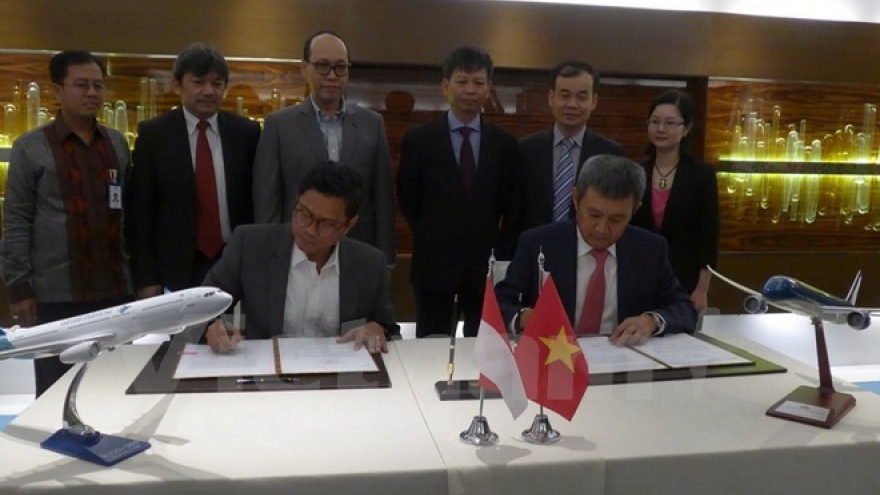Vietnam Airlines to finalise schedule for call option auction
Vietnam’s biggest air carrier Vietnam Airlines will finalise the schedule to auction call options over 57.8 million shares before the end of the third quarter of 2017.
 |
The Ministry of Transport (MoT) has approved the schedule of the auction to sell call options for the state’s stake in Vietnam Airlines to facilitate the air carrier’s initiative to raise chartered capital by additional issuance.
Duong Tri Thanh, the representative of the state’s stake in Vietnam Airlines cum Vietnam Airlines general director, can proactively adjust the timetable to fit the deadlines approved by MoT.
MoT also assigned the state representative to apply the Law on Bidding and other related regulations to choose appropriate consulting organisations for appraisal and building the plan on selling call options in the form of shortened competitive offerings.
This is the first time MoT, on behalf of the state, has held an auction to sell call options over additional issuance when an enterprise raises chartered capital.
Earlier, at the end of July 2017, the representative for the state holding in Vietnam Airlines proposed choosing appropriate consulting organisations for appraisal and building the plan on selling call options for 57.8 million shares in accordance with shortened competitive offerings.
This is the first step in the process of selling the state’s call options for a total of 164.73 million shares. Vietnam Airlines plans to issue 191.191 million new shares worth more than VND1.9 trillion ($83.6 million) in total.
Vietnam Airlines proposed that choosing consulting firms should be done at the middle of September 2017, so that the state’s representative could comply the plans on selling the call options, including the initial offering price, by the end of the month. If the schedule stays on track, the state’s representative will publish all the information about the auction by the end of October 2017. Then, the auction is expected to take place at the end of November.
It is scheduled that the deadline for Vietnam Airlines’ existing shareholders, including strategic shareholder ANA Holding Inc., to pay for the additional issuance is the end of December 2017.
Highly feasible plans
In May 2017, Deputy Prime Minister Vuong Dinh Hue allowed MoT, on behalf of the state, to exercise its call option of 1,068,628 shares and hold the auction to sell call options for 57.8 million additionally issued shares to existing shareholders.
“In case these shares are not sold out in the stipulated time, the state will spend the proceeds of nearly VND578.7 billion ($25.5 million) from Vietnam Airlines’ IPO to purchase the leftovers,” Deputy Prime Minister Hue said.
Experts considered this the best solution to support Vietnam Airlines to succeed in raising its chartered capital through the additional issuance. Meanwhile, this solution is also good to reduce state holdings in Vietnam Airlines.
According to the plan approved by the prime minister in 2014, Vietnam Airlines was equitised and the state’s holding would stay unchanged and the company’s chartered capital would be raised by VND14.1 trillion ($620.4 million) through additional issuance. Then the state was expected to hold a 75 per cent stake in Vietnam Airlines.
However, except for the stakes sold to trade unions, Vietnam Airlines’ other stake sales did not reach their initial target. In particular, the public offering reached 99.92 per cent, the stake sale for employees reached 60.35 per cent, and the sale to strategic shareholder ANA Holdings Inc. reached 38.17 per cent of the target.
The chartered capital raised at the time was nearly VND12.3 trillion ($541.2 million), which was VND1.8 trillion ($792 million) lower than the initial target. Thus, since then, the state now holds 86.16 per cent of Vietnam Airlines’ chartered capital.
After this additional issuance, Vietnam Airlines’ chartered capital and its owners’ equity will rise to VND14 and 16 trillion ($616 and $704 million), respectively. These sources of funding will help Vietnam Airlines enhance its financial independence, level of financial security, and its liabilities over owners’ equity ratio, while at the same time reducing state holdings.



